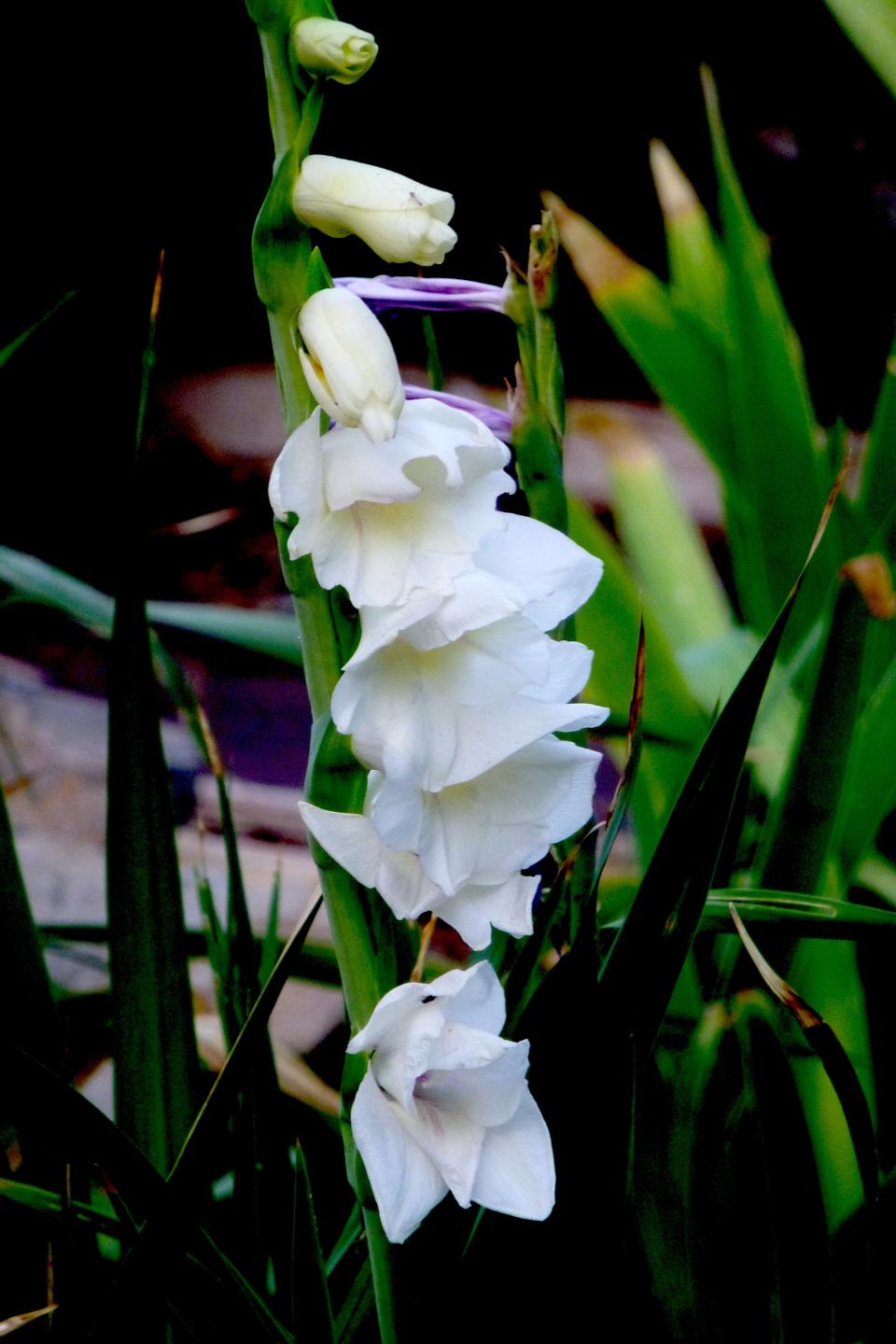Master Gardener: Creating a moon garden

Most of us are fascinated by the night sky, especially the moon. We have enjoyed moonlit walks when there is a full moon. We look for the blue moon, our harvest moon, a crescent moon and for the man in the moon.
We listen to music that is about the moon…… like “Moon River” by Johnny Mercer and Henry Mancini, “Fly Me to the Moon” by Frank Sinatra, and “Moondance” by Van Morrison. We have enjoyed nursery rhymes that included such verses as: “the cow jumped over the moon” and “I see the moon and the moon sees me." We have even traveled to the moon. So why not create and enjoy a moon garden?
A moon garden is simply a garden that is meant to be enjoyed by the light of the moon or at nighttime. The moon gets its light from the sun. In the same way that the sun illuminates earth, the moon reflects the sun’s light, making it appear bright in the sky. This is when the moon is between the sun and the earth, so the side of the moon reflecting sunlight is facing away from Earth.

Moon garden designs include monochromatic collections of white or lightly colored blooms that open at night to reflect moonlight, plants that release fragrances at night that add to the sensory experience, and plant foliage that adds a unique texture, color or shape at night.
A moon garden can be any size, shape or design. When designing a moon garden, first you will need to select an appropriate site. If space is an issue, a moon garden can be incorporated into an existing garden plot. It can even be located on a patio or balcony using a cluster of potted plants. Moon garden layouts can be a large, elaborate garden or just a small little flowerbed.
The most important point is selecting an open area that receives lots of lunar light and a place that you can easily see at night when looking out of your large window, patio door or sitting on your porch for maximum enjoyment. Avoid shady areas with lots of tall trees that could obscure the moonlight. The flowers selected for your moon garden will need full or partial sun to grow and bloom.
Pathways can be built through or around your moon garden using white pebbles or marble, which helps draw more light into the space. Accessories like a white fence or trellis or a comfortable bench can be added. Decorative objects or garden ornaments made of reflective materials or glass can be added along with bird baths or fountains for auditory sounds. If adding lights and other man-made items, be careful not to distract from the natural lunar glow.
Many gardeners have meticulously planned beautiful garden beds that are rarely enjoyed. After working a long workday and coming home to lots of household chores, it is nightfall before there is time to relax and enjoy the flowers, unless one of the gardens created is a moon garden. Plus, if you are a night owl, a night garden makes perfect sense. Not only will it bring enjoyment to the gardener but also pollinators like moths, native bees, and bats.
Before discussing various plant options for the moon garden, there are certain factors to keep in mind. One especially is the use of a mass of color. Mass plantings can have visual impact regardless of your landscape design, but a mass planting is especially called for in a moon garden to achieve a wow effect.
Another is to remember your hardiness zone in selecting plantings. We are in hardiness Zone 5 or 6, with 5 being the safest when considering expensive plantings. If they are not for our climate zone of 5/6, they can be planted as annuals but will not winter over unless brought indoors to be replanted in the spring.
Another factor is to determine whether to plant perennial or annuals and exactly when blooms appear and for what duration. There are the early bloomers, mid-season bloomers that can be reinforced with annuals and the late bloomers. The goal is to have the garden in bloom all season long and to also include winter interest.
Don’t forget bright leaves. Plants with bright foliage will work beautifully in a moon garden. One benefit to foliage is low-maintenance since leaves generally last longer than blooms. Foliage adds interest with variegated varieties, silver-colored leaves, their unique shapes, different sizes and color of leaves from light greens to dark greens.
Small deciduous trees such as dogwoods or small Japanese maple trees add interest. Shrubs such as serviceberry and dogwood can be a nice addition, along with various evergreen varieties that have lovely yellow or white needles and unique shapes. Don’t forget to consider grasses with their foliage and plumage rustling in the breezes. These will add winter interest.
Here is a list of plants to consider for your moon garden. Remember to look at soil conditions the plants prefer and the amount of moisture. When selecting, consider the plant height and space needed for each one and where to position them in the moon garden plan
There are endless possibilities, so take your time and explore each one: night phlox, lamb’s ear, variegated hosta, shasta daisy, climbing hydrangeas, Japanese wisteria, lilac, roses, evening primrose, snow in summer, sweet autumn clematis, white cosmos, moonflower, snowdrop, white bleeding heart, white daffodil, sweet alyssum, artemisia, dusty miller, variegated euonymus, anise hyssop, lavender, nicotiana, azaleas and rhododendrons, magnolia trees, peonies, yarrow, candytuft, foxglove, Korean spice viburnum, mums, gardenias, four o’clocks, mock orange, petunia, cleome, aloe "White Beauty" — and the list goes on.
"The moon puts on an elegant show, different every time in shape, color, and nuance. " — Arthur Smith.
Carolyn Johnson is a Master Gardener with the Sandusky and Ottawa counties extension offices.
This article originally appeared on Fremont News-Messenger: Master Gardener: Creating a moon garden

